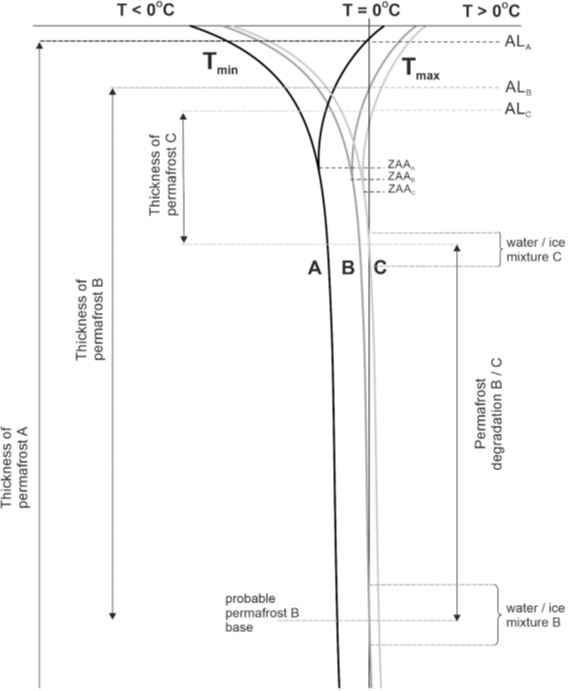The melting of ice in permafrost and the associated dangers have so far been studied in connection with its easily accessible shallow subsurface part of terrain. However, it turns out that lower permafrost part may be exposed to much larger and more difficult to detect changes. The article by W. Dobiński and M. Kasprzak shows for the first time this threat, which in the case of the so-called isothermal permafrost can rapidly advance from below even with a slight increase in temperature, as shown in the figure below. It may affect large areas of northern Canada, Siberia or Tibet and requires an urgent response not only from the scientific community but also from responsible administration.
Dobiński W., Kasprzak M., 2022. Permafrost Base Degradation: Characteristics and Unknown Thread With Specific Example From Hornsund, Svalbard. Frontiers in Earth Sci. 10:802157. doi: 10.3389/feart.2022.802157






